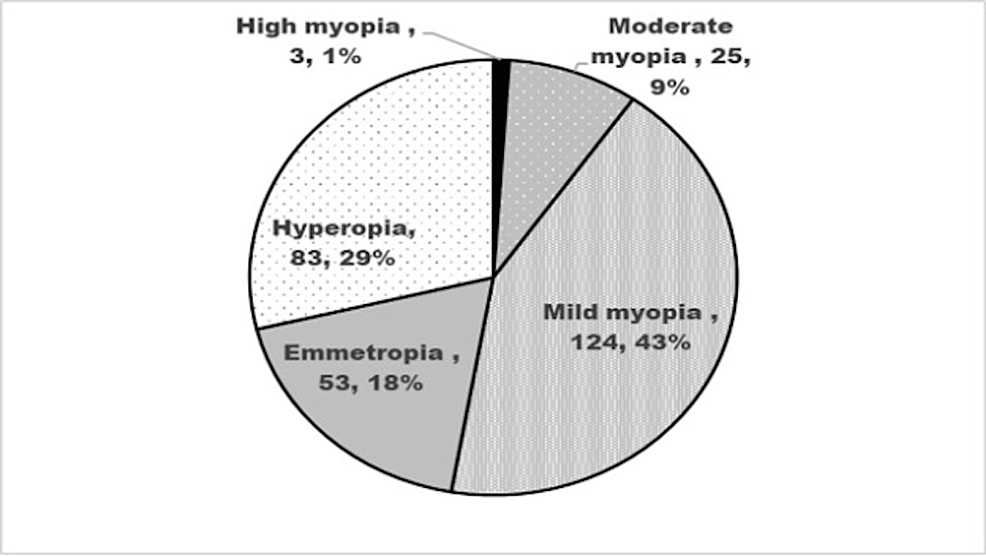Optical Coherence Tomography Based Choroidal Thickness and… Leave a comment

Purpose To study choroidal thickness (CT) and its determinants based on optical coherence tomography (OCT) in the healthy adult Saudi population. Materials and methods This cross-sectional study was conducted in 2021 at a tertiary eye hospital in Saudi Arabia. The autorefractor-based refractive status (spherical equivalent) of each eye was documented. CT was measured from the enhanced depth OCT images at the fovea to the 1500 µm nasal and temporal to the fovea. CT was defined as the distance from a hyper-reflective line representing retinal pigment epithelium (RPE)-Bruch's membrane to the choroid-scleral junction. The CT was correlated with demographic and other variables. Results The study sample included 288 eyes of 144 participants (mean age 31.5±8.3 years; males 94, 65.3%). Emmetropia, myopia, and hypermetropic spherical equivalent were noted in 53 (18.4%), 152 (52.5%), and 83 (28.8%) eyes, respectively. The mean sub-foveal (SFCT), nasal, and temporal CT were 329.4±56.7μm, 302.3±63.5 μm, and 312.8± 56.7μm, respectively. CT varied significantly by location (p <0.001). CT was negatively correlated with age (r = -0.177, P <0.001). CT in emmetropic and myopic eyes was 319.7±53 μm and 313.1±53 μm, respectively. The difference in CT based on refractive status (p = 0.49) or sex was non-significant (p = 0.6). Regression analysis suggested that age (p <0.001), refractive error (p = 0.02), scanning time (p <0.001), and scanning location (p = 0.006) were significant predictors of CT. Conclusion CT measurements of the eyes of healthy Saudis can be used as reference values for studies evaluating CT changes due to various chorioretinal diseases.
Source


